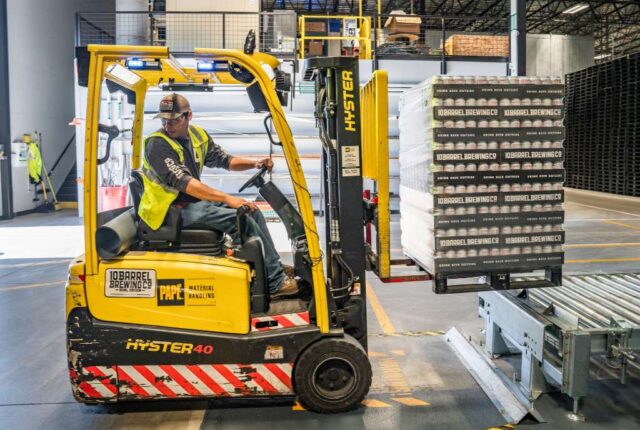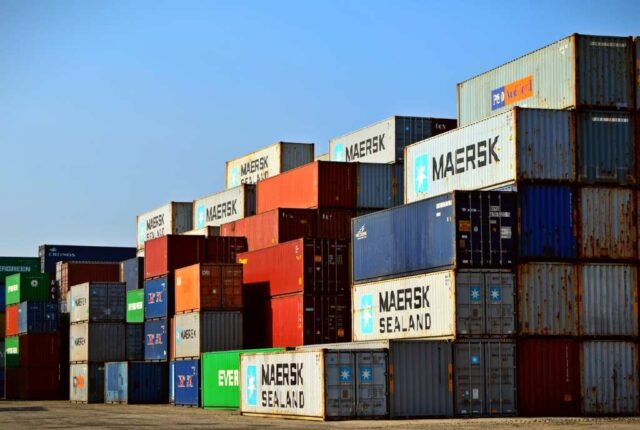
How is Logistics Customer Service Related to Management?
Logistics management and logistics customer service are two sides of a single coin, playing a significant role in trading to ensure a smooth distribution. The main purpose of logistics is to deliver the shipment within the promised timeline, resulting in maintaining the service quality and a chain of satisfied customers. Logistics management covers all steps of controlling and implementing the techniques for the smooth delivery of goods and information from the manufacturing to the consuming origin. Conversely, customer service involves clients’ satisfaction before, during, and after interaction with services.
Today’s demanding customers do not rely on simple delivery; they want transparent, responsive, and engaging service at each point. The logistics management reshaped their operating strategies to make them more efficient according to industry standards. Businesses use the latest technology to make their delivery process more accurate and monitored. Modern logistics is not moving the goods but creating value for customers. The companies align all customer service features with their operation to make it more realistic.
The Customer-Centric Supply Chain
Redefining logistics beyond transportation
The modern supply chain is not limited to storing and transporting goods in various regions. The customer-centric approach made the logistics companies more forecasting to detect customer needs. Advanced tracking tools are making goods availability easier and more accessible. Logistic management shares real-time data with customers to make them satisfied with their goods’ safety and offer tailored solutions according to storage demands.
Customer touchpoints throughout the logistics process
In the latest logistics management, every step is structured with a customer with only one motive to improve the service quality. In these updates, logistics companies develop clear communication, allowing tracking to check the order status. Arrangement of professional packing and safe goods handling ensures deliveries without damage.
Aligning logistics operations with customer service
Logistics operations align closely with customer service objectives to achieve more perfection and market reputation. Multiple functional industries, such as IT, logistics, sales team, and transportation, cooperate to create a friendly and satisfied environment. The service providers continuously use data analytics to improve quality according to real-time customer reviews.
Impact of Logistics Performance on Customer Satisfaction
Delivery speed and reliability effects
Logistics performance directly influences customer satisfaction. A company’s ability to fulfill its commitment transparently and within a given timeline can increase the patient’s trust. Delivery speed is the first and noticeable thing to observe in logistics performance. Fast and reliable delivery is a demand of every customer and its fulfillment can reduce customers’ frustration.
Order accuracy as a critical service component
Fulfilling customers’ defined orders accurately with the right product and precise quantity develops higher standards. Correct specifications can reduce returns and re-export costs. Logistics receives fewer complaints, minimizes operational costs, and increases ROI by generating satisfied customers.
Product condition and presentation influence
Maintaining the product’s condition and appearance as described in the pictures or packaging increases the customers’ happiness and develops a long-lasting relationship. Damaged goods during delivery impact the service quality, indicating that workers do not have handling or packaging training. Conversely, secure and clean packaging is proof of logistics professionalism.
Communication as a Logistics Service Function
Proactive shipment updates and visibility
Effective communication is the key to winning customers’ trust and acts as a bridge between customer experience and operational efficiency. Today’s demanding customers need real-time access to their orders’ status. Logistics companies provide proactive communication to discuss order details. Clients can freely ask about dispatch timing, arrival, or information about tracking links. Proactive communication can inform customers about all expected situations, which boosts trust and enhances service quality.
Managing customer expectations transparently
Logistics companies’ professional setting and management of customers’ expectations reduce conflicting situations. Customers’ trust in services increases when they get accurate information about delivery time, expected delays, and the product’s quality. It helps reduce differences between customers’ expectations and available services.
Problem resolution protocols
No logistics operation is free from disruption, but professional handling of all glitches matters most. An efficient logistics company must have a backup plan to deal with lost packages, route traffic issues, or damage products during handling. Customers’ frustration can be overcome if a logistics company has fast and responsive custom clearance service and can make instant decisions. A negative situation can change into a positive outcome if logistics teams conduct personalized apologies and explain the reason behind every disruption.
Integration of Customer Feedback in Logistics Improvement
Collecting and analysing customer service data
Logistics performance can be enhanced with continuous optimisation according to customers’ concerns. Honest customer reviews can prove game-changing factors, logistics companies must use secure systems to collect and analyse the service-related comments. Frequent surveys and using feedback forms to fill out after delivery can give positive reviews about the overall experience. Logistics teams can also monitor the online reviews on social media platforms to know about customers’ needs.
Feedback loops for continuous logistics enhancement
A closed loop system can prove beneficial to improve the operational efficiency of logistics companies. It must flow in a loop where feedback is collected from authentic resources to be analysed deeply and then used to optimise the operation. This adjustment can include route enhancement, changing packaging methods, and making the services more flexible for future scalability. Logistics teams can consider cross-functional collaboration to get more value for money.
Voice of the customer in logistics strategy development
Besides sharing the tweaks about operational efficiency, customers’ reviews also play a significant role in long-term changes in logistics management. The shared likes and preferences help to decide the logistics priorities and VoC guides about making informed decisions for technology integration. Making feedback optimizations in logistics management ensures that all steps are included according to real-world experience.
Technology Bridging Logistics and Customer Service
Customer service portals for logistics visibility
Developing a customer service portal can provide more authentic insights into the logistics process. These portals enhance customer satisfaction by providing smooth access to all information related to shipment status, delivery time, and updates about expected delays. Approval for customs documents also becomes easy with an online portal.
Self-service options for delivery management
Modern consumers demand a controlled and accessible delivery experience rather than relying on service providers entirely. By developing this feature, customers can individually reschedule and reroute their deliveries. They can also pick the items personally from the store or choose an exchange policy without contacting customer support.
AI and automation in customer service logistics applications
Logistics companies can ensure a satisfied customer experience by developing chatbots and additional assistants. This modern step helps in answering the customers’ queries. Management can also choose an FAQs series to answer the most common questions of consumers. Automated issue resolution and predictive analytics development are a beneficial step in this context.
Final Analysis
In today’s competitive business landscape, a satisfied customer service ensures success in logistics management. Businesses that handle logistics not as a mode of delivering items but developing a long-lasting customer relation get a standard position in the market. Excellent customer service in logistics management enhances speed and accuracy to get more orders. The companies must adopt a cross-functional approach to achieve perfection in all. Collaboration with other service providers helps in managing the deliveries more efficiently. In future trends, the demand for customer-centric logistics is increasing rapidly so companies should focus on real-time communication for more satisfied operations.
FAQs
How can reverse logistics processes improve customer satisfaction?
Reverse logistics availability allows customers to exchange, return, or refund their products without bearing additional costs. A quick and transparent access to refund and return policies ensures that the logistics company is highly committed to the values of customer service.
What role does packaging play in customer perception of logistics quality?
Professional packaging plays a defined role in customers’ perception. A secure packaging with an attractive presentation showcases the high standards of service providers. Conversely, damaged and improper handling can cause frustration.
How should logistics managers handle service recovery after delivery failures?
A dedicated logistics management provides a fast and empathetic response to develop transparent communication with the client. It helps to change the frustration into satisfaction. Logistics companies should apologize sincerely and arrange alternative arrangements instantly to maintain customer relationships.
Related posts
How to Manage Logistics Operations in Dubai?
Dubai is a crossroad or bridging city connecting multiple cultures and sharing t
What is Strategic Logistics Planning in Dubai?
Making strategic logistics planning to operate in the highly competitive infrast
What is sustainable logistics?
Sustainable logistics’ – often called green logistics – involves t





Leave a Reply